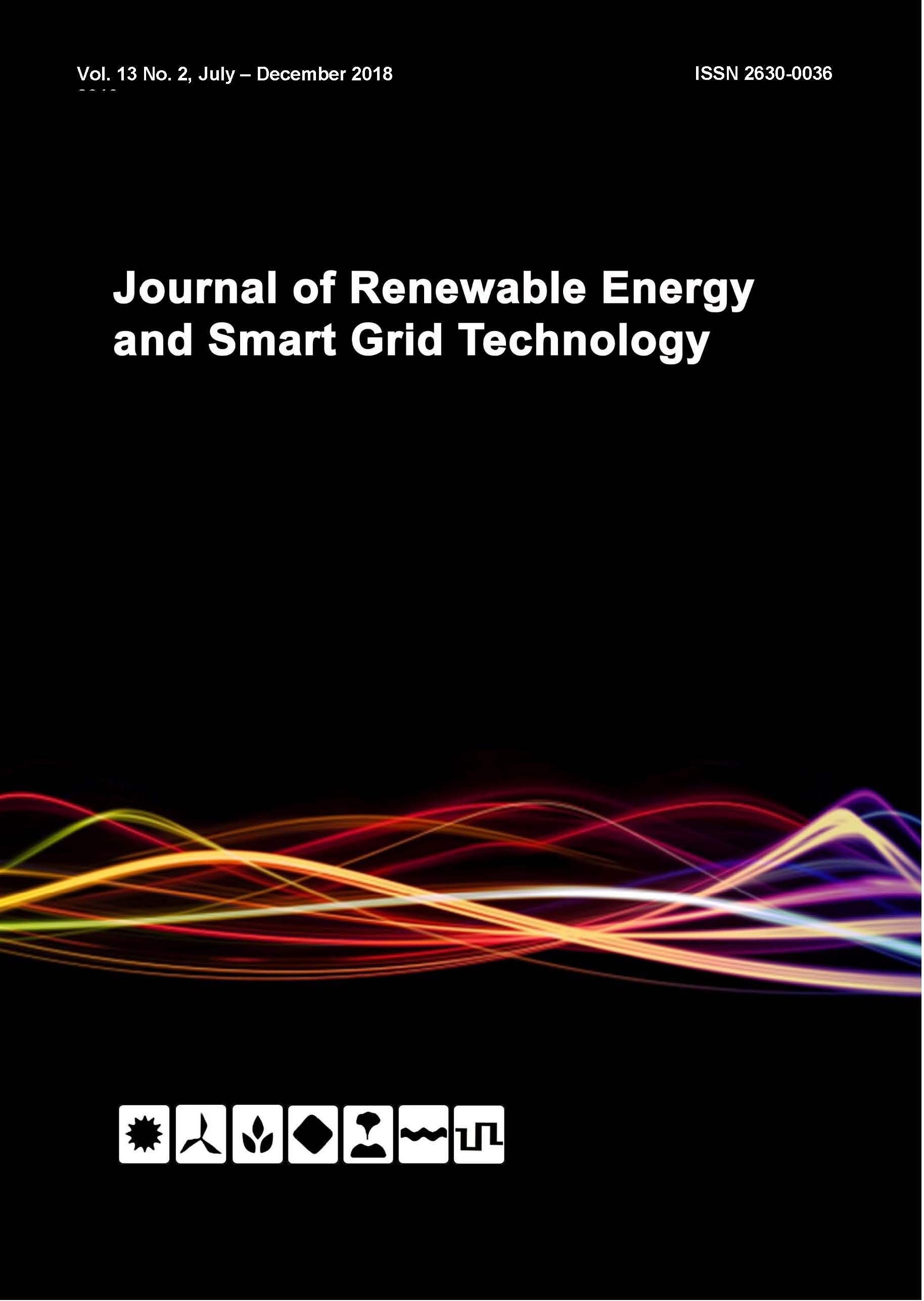Silicon composite ink for advanced photovoltaic generation prepared by low-cost technique
Keywords:
Silicon ink, silicon quantum dots, wider band gap, tandem silicon photovoltaicAbstract
This work describes the preparation process of crystalline silicon composite ink (Si ink) from waste silicon wafers as raw material through a grinding technique. Crystalline Si powders were homogeneously distributed in sol-gel solution via an ultrasonic shaker. The thin films of silicon dots bound with phosphorus silicate glass were produced from Si ink under drying at low-temperature by a low-cost technique as a screen printing. Micro-crystalline (mc) Si particle sizes and surface morphology of Si dots film were imaged by laser size analyzer and scanning electron microscopy, respectively. In this paper, these mc-Si dots films coating on quartz substrates were characterized by X-ray diffractometer and micro Raman spectroscopy techniques which are non-destructive optical tools to study micro- and nano-structural properties. XRD analysis revealed that ~80nm crystalline Si size in the films with relative intensity at (111) plane of 60-64% simultaneously exists into the films during the preparation at 100-400°C sintering condition. Meanwhile, the obtained Raman spectroscopy results suggest that residue stress mainly effects to the Raman asymmetric peak strongly down shifted rather than dominated by (< 10 nm) small size effect.
References
M.A. Green, Third generation photovoltaics: Advanced solar electricity generation. Springer Verlag, Berlin; 2003.
Conibeer G., Green M.A., Cho E.C, König D., Cho Y.H., Fangsuwannarak T., Scardera G., Pink E., Huang Y., Puzzer T., Huang S., Song D., Flynn C., Park S., Hao X, Mansfield D., Silicon quantum dot nanostructures for tandem photovoltaic cells. Thin Solid Films, 2008; 516 (20): 6748–6756.
Kintz H., Paquez X., Sublemontier O., Leconte Y., BoimeN., Reynaud C., Synthesis and layering of Si quantum dots/SiO2 composite films for third generation solar cells. Thin Solid Film 2015; 593: 96-101.
Sahu B.B, Yin Y., Lee J.S., Han J.G, Shiratani M., Plasma diagnostic approach for the low-temperature deposition of silicon quantum dots using dual frequency PECVD. J. Phys. D: Appl. Phys. 2016; 49: 395203-395217.
Antoniadis, H., Silicon ink high efficiency solar cells. 34th IEEE Photovoltaic Specialists Conference (PVSC) 2009; 000650-000654.
Camden R. Hubbard, Standard reference material 640a silicon powder 2θ/d-Spacing Standard for X-ray Diffraction. Washington, D.C.; 1982; 20234.
Campbell I.H., and Fauchet P.M., Solid State Communications, 1986; 58: 739.
Jian Zi, H. Büscher, C. Falter, W. Ludwig, Kaiming Zhange and Xide Xie, Raman shifts in Si nanocrystals, Appl. Phys. Lett. 1996; 69 (2)
Downloads
Published
How to Cite
Issue
Section
License
All copyrights of the above manuscript, including rights to publish in any media, are transferred to the SGtech.
The authors retain the following rights;
1. All proprietary rights other than copyright.
2. Re-use of all or part of the above manuscript in their work.
3. Reproduction of the above manuscript for author’s personal use or for company/institution use provided that
(a) prior permission of SGtech is obtained,
(b) the source and SGtech copyright notice are indicated, and
(c) the copies are not offered for sale.



